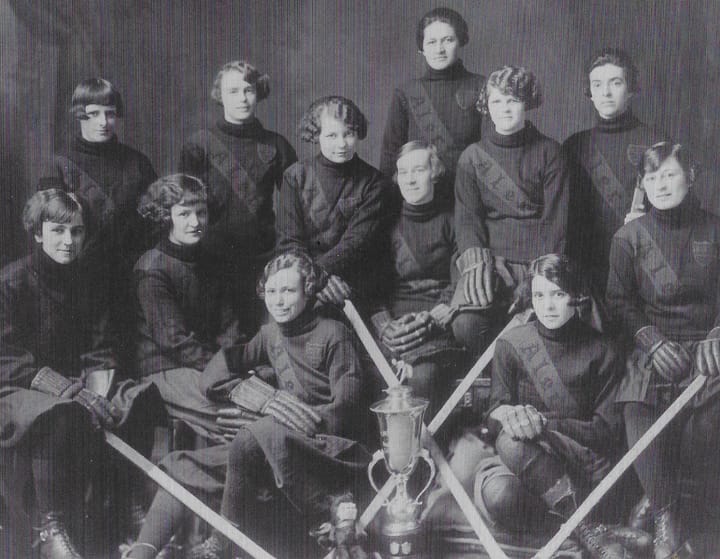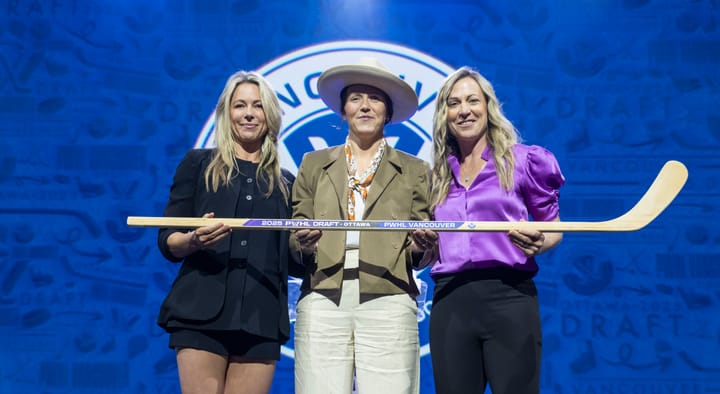The NCAA Settlement's Potential Impact on Women’s College Hockey Programs
The historic NCAA settlement could have huge implications for incoming players.

This is a student guest post.
The buzz surrounding the NCAA’s recent announcement of a historic settlement of three major antitrust lawsuits has reached a crescendo.
The NCAA and Power 5 conferences have agreed to pay over $2.7 billion in back damages to current and former athletes who participated in NCAA games from June 15, 2016 until Nov. 3, 2023 to correct unfair restrictions preventing athletes from benefiting from name, image, and likeness (NIL). The settlement also introduces a new revenue-sharing model. Future athletes will benefit from this change, with each school expected to receive more than an estimated $20 million in shared revenue, possibly starting as early as the fall of 2025. This will now allow players to be compensated for their participation and dedication to their sport. The $20 million is expected to grow over 10 years, dependent on 22% of the average revenue of these schools. Additionally, there is a guaranteed built-in 4% increase each year for the first three years.
The first glaring question is how the revenue will be distributed, but the settlement does not appear to outline specific guidelines for its allocation. While some finer details need to be straightened out, Title IX applies here, so the revenue should be split evenly between the men’s and women’s sports. Like a balanced restaurant menu, this revenue distribution must ensure a variety of fairness and equity across all sports.
With the growth of professional women’s hockey in North America over the past decade, more eyes than ever are turned to the NCAA to see the future stars in the pipeline. The Ohio State University, known for its reputable women’s hockey program, capped off their historic 2023-2024 season with a National Championship on March 24th. The excitement reignited on June 10th, when eight Buckeyes were drafted into the PWHL, representing 19% of the 42 picks in the draft. OSU, a member of the Big 10 Conference, has 36 Division I teams that compete in the NCAA. They have an exceptional scouting program for each sport, and recruit well-rounded athletes, many of whom turn pro following their college careers.
The sheer amount of Division I teams at OSU will impact the distribution of funds among the athletes. The estimated $20 million will be distributed among those 36 programs, meaning each athlete will personally take home less money than if they were at a school with fewer teams. This is not just the case at OSU, as the University of Wisconsin and the University of Minnesota are other Big 10 Schools which are popular among women’s hockey prospects. Just as customers peruse a menu to decide which meal will give them the most bang for their buck, student-athletes must weigh the financial implications of selecting schools with many or fewer teams.
The University of Minnesota Duluth (UMD) is known for its outstanding hockey programs, celebrated for its storied tradition and numerous NCAA Championships, including five titles for the women’s program since 2001. Currently, there are 10 former Bulldogs shining in the PWHL, among them Jocelyn Larocque, Gabbie Hughes, and Emma Söderberg. With only 16 Division I teams, UMD can offer more financial opportunity for their athletes. Playing in the State of Hockey has many benefits for young hockey prospects as the sport is the main show in town, but having money in the bank will only sweeten the deal. Other schools such as Bemidji State (Walter Cup Champion Clair DeGeorge’s alma mater before she transferred to OSU in her fifth year of eligibility), the University of Maine, and Minnesota State, will also have more to gain from the settlement due to their shorter lists of Division I programs.

Prospects also have to consider scholarship opportunities. According to the settlement, the restrictions on the number of scholarships that schools can distribute will be removed. This change benefits larger schools that may have missed out on talented players in the past due to existing scholarship limits. Now, these schools’ athletic departments can offer as many scholarships as they can afford. But again, Title IX will be a factor here. Each school will have its own approach to managing their new allocations.
Retiring OSU Athletic Director Gene Smith outlined the school’s plan when speaking with CBS Sports. According to Smith, the school’s programs will be divided into three tiers. The top tier’s rosters will be composed of players on full scholarships, the middle tier will be a combination, and the bottom tier will include non-scholarship sports. The top tier will feature football and basketball, along with the third sport that will vary based on the popularity within each specific conference. These tiers will be determined by the athletic department, so the ranking of each sport is at their discretion. Given the recent success of the women’s hockey program, it should be a strong contender for the third spot in the top tier. This is uncharted territory and each athletic department will have to construct their own strategies and implement them as they see fit.
Now women looking to play in the NCAA can have more of a say in their financial futures. Do they wish to have a lucrative college tenure at a smaller program where there is more money to go around, or shoot for the more prestigious schools loaded with Division I teams in hopes of reaching the champagne showers? If players bring home a smaller paycheck by selecting the latter option, could it spike their career development and potentially help them secure a post-collegiate career? Will these young phenoms choose an awarded guaranteed scholarship on their way in, or look towards a potential salary on the way out? Whatever they choose, one thing is clear: they have more options than ever.





Comments ()